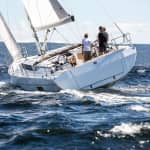The following museums are presented in more detail in this article:
The specified opening hours refer to the summer season
1st Ozeaneum, Stralsund- Penguin breeding, aquariums and large whales
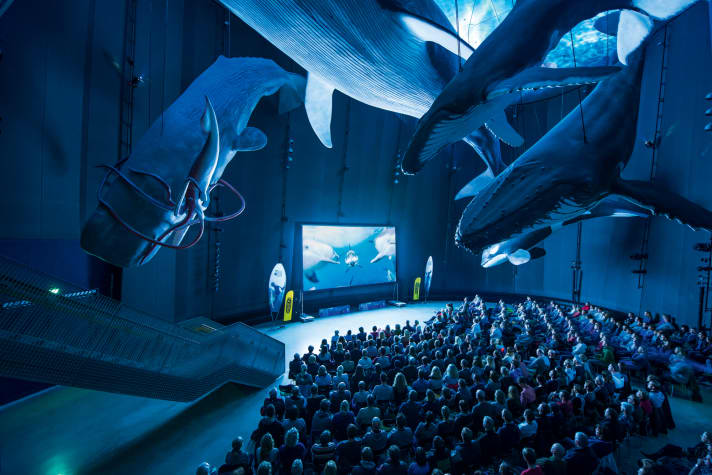
Opened by Chancellor Merkel in 2008, the maritime museum polarises at first glance with its extravagant architecture in the midst of historic buildings on the harbour. The white exterior façade made of ship steel forms a striking break in the romantic harbour panorama of the Unesco World Heritage city of Stralsund.
Mocked by many locals as a "toilet roll", the Ozeaneum quickly developed into a crowd-puller that has attracted eight million visitors to date and was named "Europe's Museum of the Year 2010". And quite rightly so.
50 seawater aquariums, some of which are huge, provide impressive insights into the underwater landscapes of the northern seas. In the themed worlds "Baltic Sea", "North Sea" and "Open Atlantic" as well as in the penguin tank on the roof, the animals can be observed in elaborately constructed and authentic-looking habitats.
The discovery tour in the Baltic Sea aquariums begins with the Stralsund harbour basin and leads across the Bodden waters past the chalk coast of Rügen to the archipelago of Scandinavia. The Baltic Sea exhibition alone is considered the largest of its kind in Europe. In the North Sea basins, a tunnel aquarium is dedicated to Heligoland, Germany's only high seas island, while sharks and
rays circle a shipwreck in the largest pool of the Atlantic exhibition. This wreck is a detailed replica of a cargo ship that ran aground off Namibia in 1909.
The aquariums, in which over four million litres of seawater circulate, are joined by numerous animal and plant exhibits created by the in-house taxidermy department. On the roof terrace of the Ozeaneum is another major attraction that could raise the question of species-appropriate husbandry, especially in summer: Humboldt penguins frolic here in a rock and water landscape with the best view of Stralsund's old town. But in the
Unlike Antarctic emperor penguins, for example, these are used to warm land temperatures, provided they can dive into cold water. They are also threatened with extinction, which is why breeding helps to preserve the species.
The museum experience is rounded off with the "1:1 Giants of the Seas" exhibition, in which various sea giants hang from the ceiling in lifelike size and impressively illuminated. These include a 26 metre long blue whale and a diving sperm whale in a clinch with a giant squid. Humpback whale songs and the clicking sounds of hunting sperm whales perfect the unique atmosphere, which can also be enjoyed while lying down. In addition to changing photo exhibitions, there is a well-stocked museum shop offering a wide range of gift ideas for young and old, as well as a restaurant with a beautiful view of the harbour island.
A tip on the side: especially in bad weather, tourists flock to the Ozeaneum in droves from all over the region to queue for admission. So it's definitely worth spending a day in the harbour or museum when it's sunny and calm.
Daily from 9.30 a.m. to 8 p.m.
2nd Maritime Museum Denmark, Helsingør- Seafaring underground
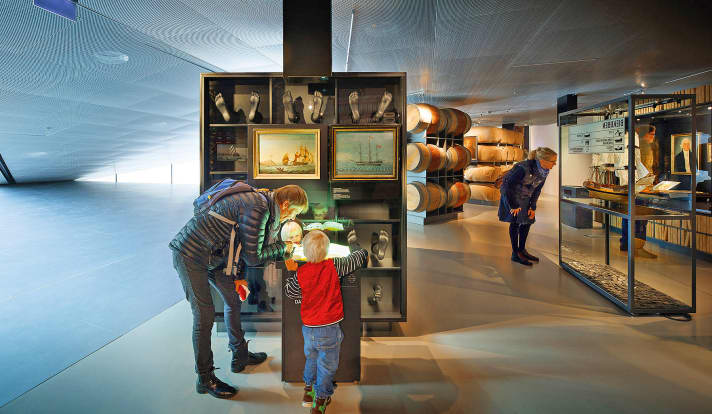
Within easy walking distance of the marina in Helsingør, the Maritime Museum of Denmark is hidden underground in Kulturhavn Kronborg. It presents the history of Denmark as a seafaring nation in a former dry dock in an architecturally impressive setting.
Open daily from 10 am to 6 pm.
3rd Flying P-Liner, Mariehamn- "Pomerania", the best of its kind
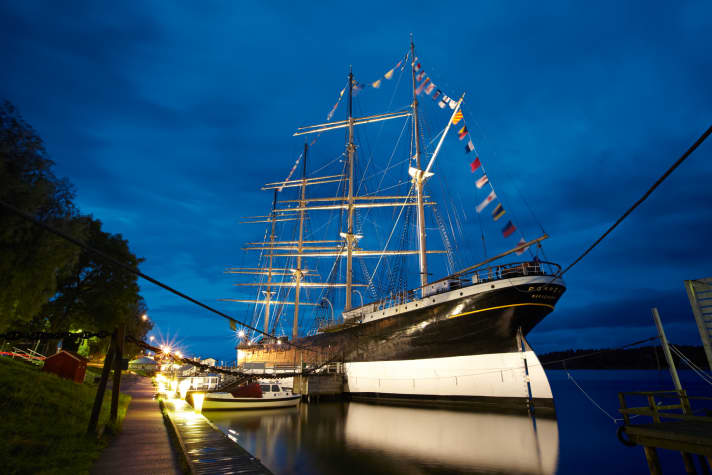
Crews can find a piece of German maritime history and evidence of the great age of sailing ships in faraway Mariehamn in the wildly rugged archipelago of the autonomous Åland Islands between Sweden and Finland. The mighty windjammer "Pommern" is moored right next to the marina as a museum ship of the affiliated Åland Maritime Museum. Built in Glasgow/Scotland in 1903, the four-masted barque is considered the best-preserved representative of its class and is the only one still in its original condition.
The exhibition on the black steel ship, which is well worth seeing, uses pictures, sounds, documents and activities to authentically convey the hard working life and scarce leisure time of the seamen in the 1930s, when it was used in the wheat trade between Australia and Europe.
The "Pommern" belonged (alongside the "Pamir", the "Passat" and the "Beijing" ) was at times one of the eight legendary so-called Flying P-Liners of the Hamburg shipping company F. Laeisz. The ships were known for their good sailing performance, with a maximum speed of 16 knots. The ship, which was 106 metres long overall, went to Greece in 1923 as war reparations and was then bought by the Finn Gustav Erikson, who owned the largest sailing ship shipping company in the world for a time and was based in Mariehamn.
In the meantime, the ship served as a wheat store in Stockholm. Erikson's heirs donated the four-masted barque to their hometown on the condition that it be preserved in its original condition.
In addition to the era of sailing ships, the adjacent maritime museum is dedicated to motorised shipping and topics such as boat building, safety, navigation, Cape Horn and Mariehamn as a maritime centre.
The museum also has special exhibitions, an archive and a library. It organises guided tours and a programme for children with a treasure hunt, ship simulator and sailing themes.
Daily from 10 am to 5 pm
4th frigate "Jylland", Ebeltoft- Sailing like in the 19th century
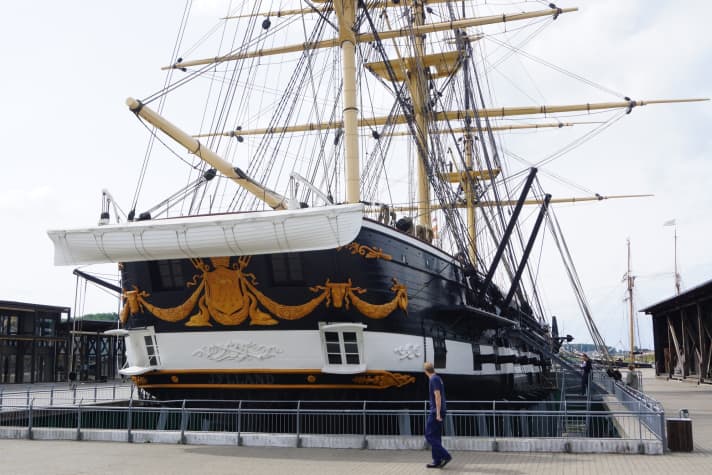
The frigate "Jylland" fought in the German-Danish War, served as a drill ship and performed representative duties for the royal family. Completed in 1860, built of wood and armed with muzzle-loading cannons, it was already outdated when it was commissioned, but is still well worth seeing today. The fully rigged boat lying in a dry dock illustrates the hard life on board a 19th century warship.
Daily from 10 am to 6 pm
5th Maritime Museum, Marstal- Denmark's hyggeligstes Søfahrtsmuseum
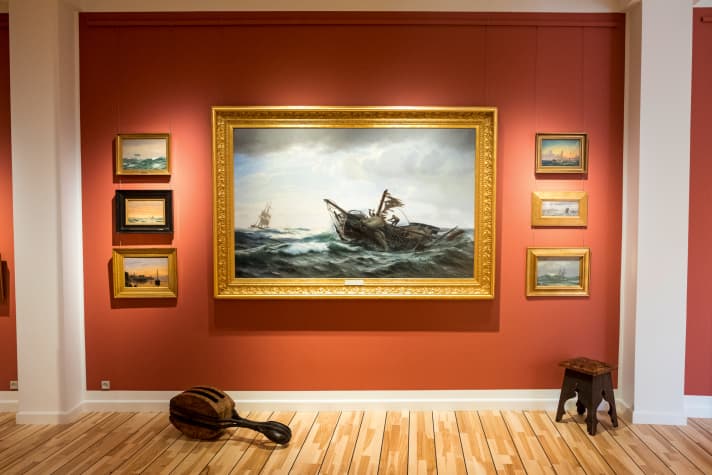
Located directly on the harbour in Marstal, the museum displays one of the largest collections of pictures and exhibits relating to the history of shipping and shipbuilding in the Kingdom of Denmark in several buildings and on the outside grounds. The focus is on the heyday of the past three centuries. On display is the development of various types of boats from sailing fishing vessels and merchant ships of all kinds to the age of modern motorised ships. The place where the museum is located is rich in maritime tradition. Marstal was one of Denmark's most important harbours in the heyday of sailing, home to a large part of the Danish merchant fleet and famous beyond the region for its "Marstal schooners" from well-known shipyards. Like many other types of ship, they can be admired in the form of more than 250 faithfully reproduced models. Fans of ships in bottles will also get their money's worth: around 250 of these gems can be seen in the museum.
In addition to numerous paintings, the exhibition also includes an extensive and colourful collection of souvenirs brought home by local sailors from all over the world. Some sailed as far as China and brought home the most bizarre souvenirs, from shrunken heads from Ecuador to stuffed animals and traditional weapons - but also handicrafts with which they passed the long time at sea. Seafaring can be experienced in almost real life in the saloon and on the bridge of the small coaster "M/S Dora", which have been recreated here in their original state. Of course, the classic nautical artefacts are not missing either. Historical navigation material, nautical charts and logbooks can be discovered as well as old technical equipment and instruments. Outside the museum, you can see an old Caroliner-class cargo ship, a series of coasters, several small floating craft and a miniature museum shipyard.
Daily from 9 am to 5 pm
6th Smakke- og Naturcenter, Strynø- Dinghy construction in the best Danish tradition
Øhavets Smakke- og Naturcenter is a centre for water sports, sailing and nature experiences on the small island of Strynø in the South Funen archipelago. The centre has a small shipyard where the typical Danish Smakke dinghies are worked on. The centre also offers sailing lessons and hires out the small dinghies, in which up to five people can enjoy fast sailing fun. The centre also has a nature and culture exhibition.
Daily from 8 a.m. to 7 p.m.
7th Hanseatic Museum, Lübeck- Trade in transition from the Middle Ages to the present day
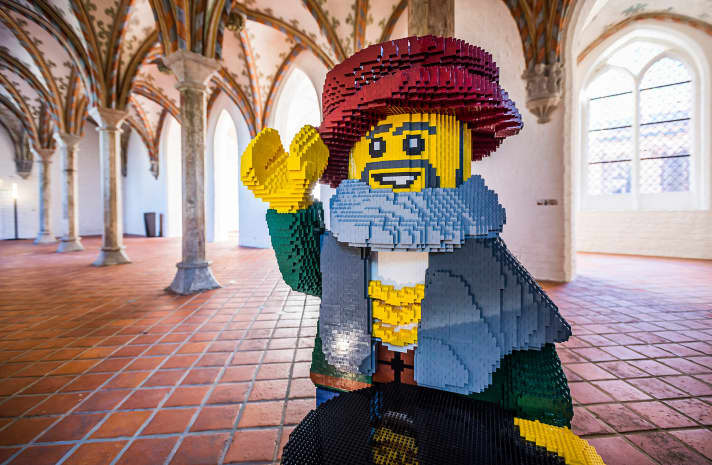
In Lübeck, the world's first museum is dedicated to the history of the Hanseatic League in Europe, the trading network that paved the way for the modern economy. The permanent exhibition "Experience the Hanseatic League" shows in a scenic, interactive way and with contemporary exhibits how the small town, strategically located on the Baltic Sea for trade, became one of the richest cities of the Middle Ages: the daring of the Hanse merchants, life abroad, wealth, splendour and faith. Visitors can explore special events from the period between the founding and dissolution of the trading organisation in reconstructed scenes, for which two cogs have been faithfully recreated. Rare documents, paintings and artefacts provide an insight into the life and work of the Low German merchants.
The journey leads not only through time, but also through the countries, through the most important trading centres of the time: from a lively sales hall in the cloth-making city of Bruges to London and the important stockfish trading centre in Bergen, Norway. Exhibits such as rare documents, paintings and collector's items bear witness to the work and prosperity of the merchants.
At interactive media stations, visitors can trace the routes of cloth and fish, pepper and salt and learn a lot about typical everyday life and the economic connections. Special exhibitions focus on individual aspects of the period, such as piracy and the cloth trade. The exhibition is partly housed in the castle monastery in Lübeck, one of the most important medieval monastery complexes in northern Germany.
Daily from 10 am to 6 pm
8th Vasa Museum, Stockholm- From disaster to success
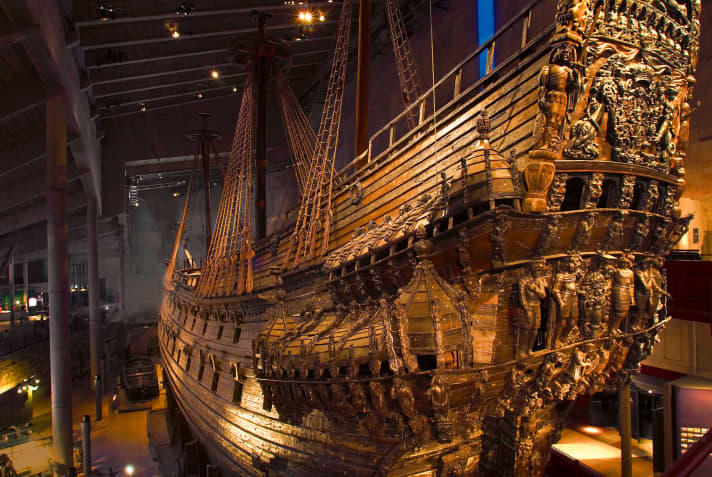
The first impression: overwhelming. Anyone entering the large, darkened hall on the Stockholm island of Djurgården will be amazed and shiver in the face of the towering, mighty and well-preserved "Vasa" from 1628 and a very special atmosphere, and not just because of the cool 18 to 20 degrees in the museum, which is the optimum temperature for preserving the wood.
And then the story of the galleon: the largest warship of its time, commissioned by King Gustav Adolf II, sank during its maiden voyage in Stockholm harbour after travelling less than a nautical mile, killing 33 people. Stability calculations did not yet exist; an additional battery deck ordered by the king had led to heavy top-heaviness, and the ship sank with a large heel after a strong gust over its leeward ports.
For 333 years, the warship, which had stood proud until the tragedy, lay at the bottom of the Swedish capital, lost, its position lost. Archaeologist Anders Franzén only found it in 1956 after two years of intensive searching. The "Vasa" was raised, hauled, cleaned, watered, treated with a resin mixture for 17 years and finally put on display.
Today, the only surviving ship from the 17th century is one of Scandinavia's most important and best-visited attractions in its museum, which was built near the site of the accident and discovery. Around 1.5 million visitors flock to the dark hall every year - from disaster to success story. In addition to the ship, which unfortunately cannot be entered, the museum displays reconstructed cabins, models, various exhibits and materials from its time as well as documentation on the salvage and restoration.
Sailors can reach the museum on foot; in Stockholm, the best place to be is in Wasahamnen. And for those who prefer something more mundane, the Abba and Sprit museums and the Gröna Lund amusement park are also close to the city marina.
Daily from 10 a.m. to 5 p.m., Wednesdays until 8 p.m.
9th Yachting Heritage Centre, Flensburg- New classics with a view
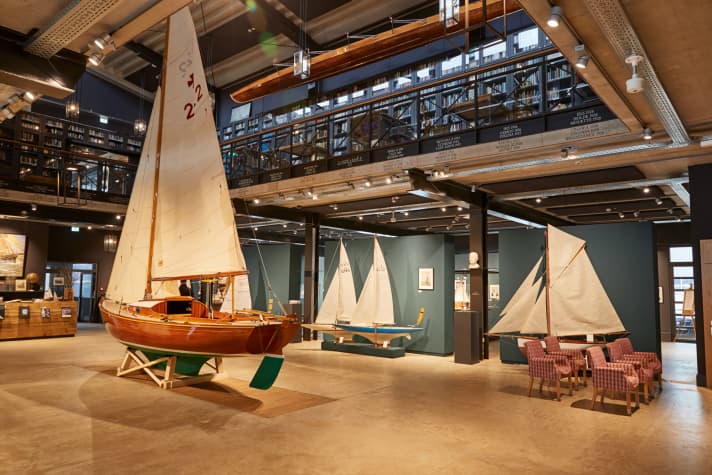
The history and beauty of classic yachts is displayed and preserved in the museum located directly next to the traditional Robbe & Berking shipyard. Wooden boats built and maintained with loving attention to detail are on display in the building on Flensburg's city harbour. In addition, changing art exhibitions are dedicated to the fascination of life in, around and on the water. Lovers of the written history of yachting can delve into more than 3,500 copies of antiquarian yachting literature.
Two galleries, a museum shop and a restaurant with a beautiful view of Flensburg's old town round off the programme. By prior arrangement, groups can experience the construction and maintenance of classic wooden yachts on a guided tour of the museum's own wooden boatyard.
Daily from 11 a.m. to 5 p.m., Monday closed
10th Naval Museum, Karlskrona- Full ships, models, figureheads and an egg carton
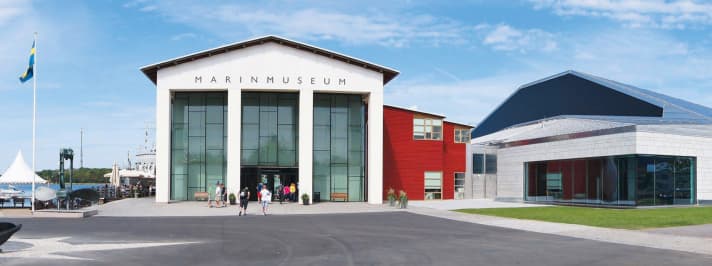
Ship models for testing various designs, which have been kept in a model chamber since the mid-18th century, are one of the focal points of the Karlskrona Naval Museum. It also houses one of the world's largest collections of figureheads. Next door on the quay, historical barges, a small full-rigged ship, minesweepers and speedboats can be viewed. Archives and a library invite visitors to browse and research. The museum is located on a pier on the island of Stumholmen in Karlskrona. Right next door is the sloop and launch shed under a roof that resembles an egg carton. Boats and dinghies are still built and maintained here today.
The opening hours vary






